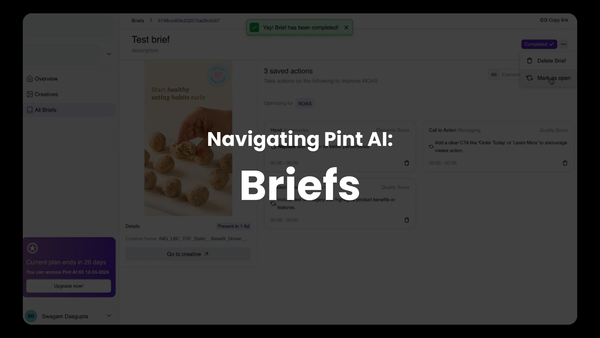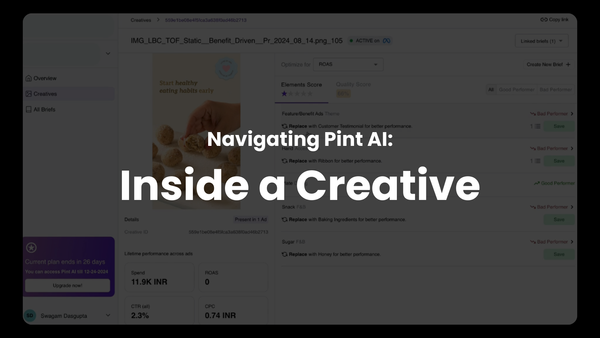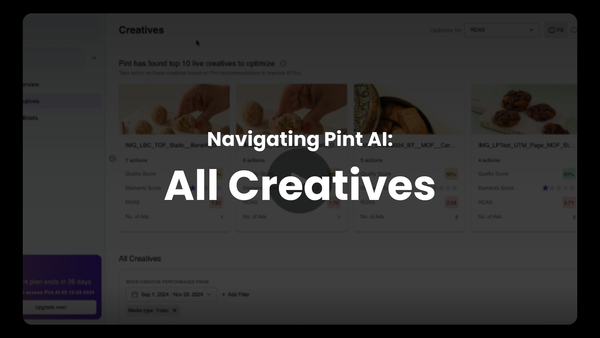Creative Analytics 105: Sound & Music Can Lift Ad Performance
Sound and music are central aspects of video ads, especially across short form videos. Using them effectively is central to improving ad performance.
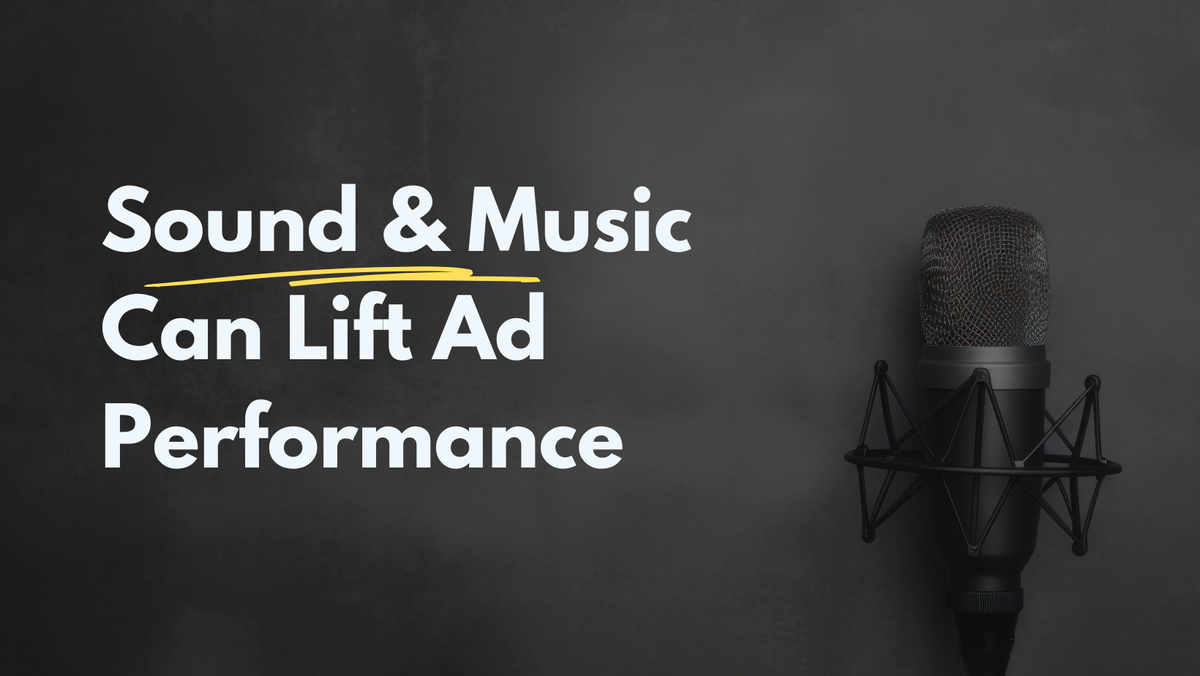
It's no surprise that sound and music play a pivotal role in digital ads — especially in video ads. It's rare to see any video ad, especially the short form ones — Instagram Reels, Tiktok Ads, YouTube Shorts — without any sound or music.
So why is sound and music so popular?
In short, they can enhance emotional impact, improve brand recall, and complement the overall message of the ad. And using them well can have a decent impact on ad performance.
The Role of Sound and Music in Digital Ads
Emotional Impact
Background Music: The right background music can evoke specific emotions and set the tone for the ad. For example, upbeat music can create a sense of excitement and happiness, while slower, softer music might evoke nostalgia or calmness.
Emotional resonance is key to making ads memorable and impactful. Research shows that ads with well-chosen music can significantly enhance the viewer’s emotional engagement.
Sound Effects: Sound effects can highlight certain actions or elements in the ad, making them more noticeable. For instance, the sound of a camera shutter clicking can emphasize the moment a photo is taken, adding a layer of realism and engagement to the visual content.
Sound effects, when used judiciously, can draw attention to specific elements and enhance the overall storytelling.
Complementing the Message
Tone Matching: The choice of music and sound should align with the overall message and tone of the ad. For a luxury brand, classical or sophisticated music might be appropriate, whereas a playful, family-oriented brand might opt for more cheerful and lively tunes.
The alignment between audio and visual elements ensures a cohesive ad experience that reinforces the brand message.
Narrative Enhancement: Sound and music can also enhance the storytelling aspect of an ad.
They can be used to build suspense, create a climax, or provide a resolution within the narrative structure of the ad, making the story more engaging and memorable for the audience. This technique helps in creating a more immersive experience for the viewers.
Brand Recognition
Jingles and Signature Sounds: Many successful brands use jingles or signature sounds that become instantly recognizable. These audio elements help in building brand identity and recall.
For example, the McDonald's "I'm Lovin' It" jingle is instantly recognizable and associated with the brand globally. Such audio branding can create strong mental associations and increase brand recall.
Consistency: Consistently using specific types of music or soundscapes across ads helps reinforce brand identity and make the ads more cohesive.
This consistency aids in creating a strong, unified brand presence that consumers can easily recognize and trust.
Technical Considerations
Quality and Clarity: Ensuring high audio quality is crucial. Poor sound quality can detract from the overall experience and make the ad seem unprofessional. Clear, well-mixed audio ensures that the message is conveyed effectively without distracting the audience. High-quality sound enhances the perceived quality of the ad and the brand.
Volume Levels: The volume of the audio should be balanced to ensure it complements the visuals without overpowering them. It's essential to maintain a consistent volume level across different ads to avoid startling or annoying the audience. Proper volume levels ensure that the audio elements are pleasant and not disruptive.
Practical Tips for Using Sound and Music in Ads
1. Select Music that Matches the Brand and Message
Choose music that reflects the brand's identity and complements the ad's message. For instance, a fitness brand might use energetic, upbeat music to convey vigor and motivation.
Music should enhance the narrative and emotional tone of the ad, creating a more compelling experience for the viewer.
2. Use Sound Effects Sparingly
While sound effects can enhance an ad, overusing them can be distracting. Use sound effects strategically to highlight key moments without overwhelming the viewer.
Effective use of sound effects can add depth and dimension to the ad, making it more engaging and memorable.
3. Test Different Audio Elements
Conduct A/B testing with different music tracks and sound effects to see which combinations resonate best with the target audience. This can help in refining the audio elements to maximize engagement and impact. Testing allows for data-driven decisions and optimizes the ad for better performance.
Tools like what we're building at Pint AI, help you do just this, through creative analytics. Along with sound and music, you can look at the impact of several different creative elements on ad performance!
Interested? Sign up today!
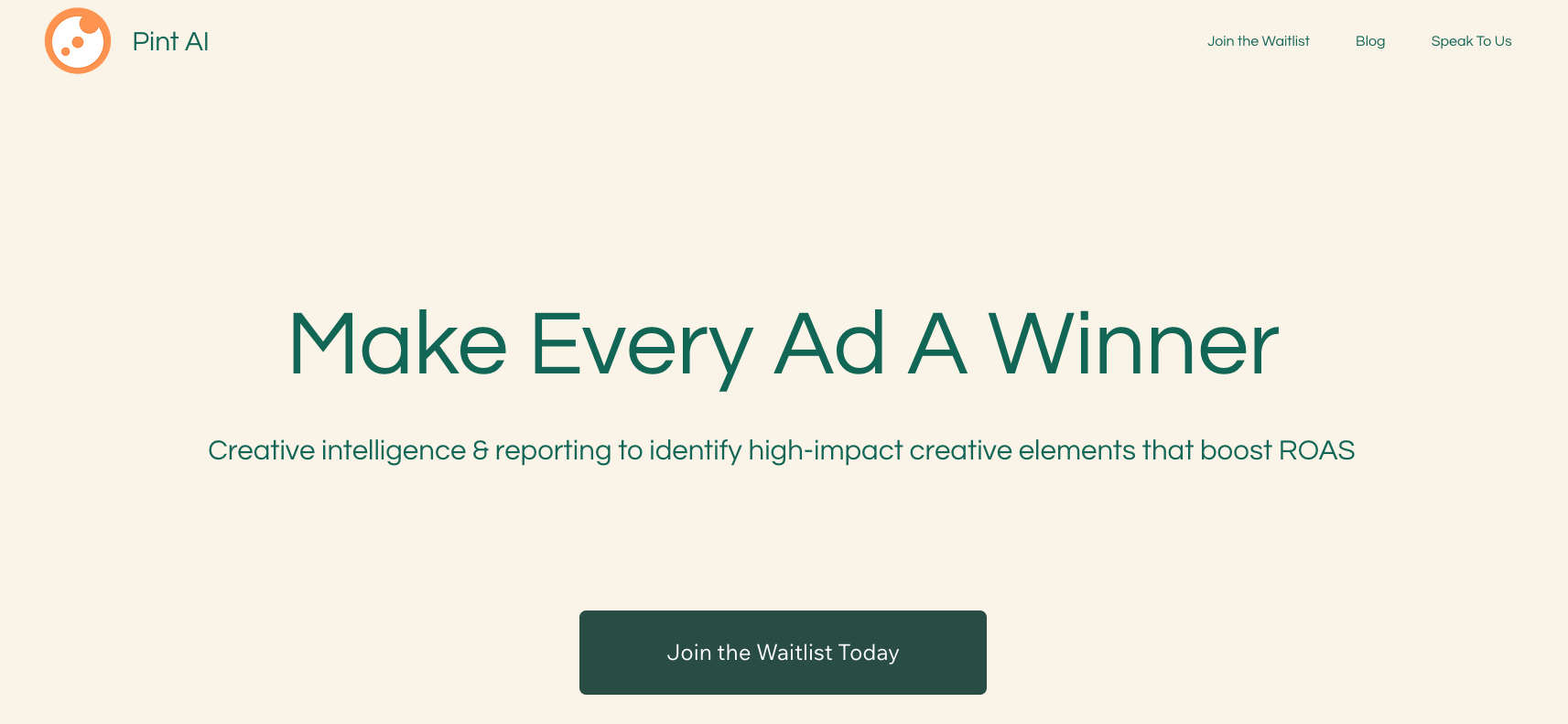
4. Consider Cultural Contexts
Be mindful of cultural differences when choosing music and sound. What works in one region or demographic may not be effective in another, so it's essential to tailor the audio elements to the specific audience.
Understanding cultural preferences and sensitivities can enhance the ad's relevance and acceptance.
5. Leverage Professional Audio Production
Investing in professional audio production can significantly enhance the quality and effectiveness of the ad. Professional sound design ensures that the audio is crisp, clear, and well-integrated with the visuals. High-quality audio production reflects positively on the brand and can elevate the overall ad experience.
Case Studies and Examples
Case Study 1: Microsoft's "Empowering Us All" Campaign
Microsoft's "Empowering Us All" campaign effectively used background music to evoke emotions of inspiration and empowerment. The music choice complemented the visuals, which showcased individuals using Microsoft technology to achieve great things.
This cohesive use of sound and visuals created a powerful and memorable ad that resonated with viewers globally.
Case Study 2: Coca-Cola's "Share a Coke" Campaign
Coca-Cola's "Share a Coke" campaign featured a catchy jingle that became synonymous with the brand. The jingle was used consistently across various ads, reinforcing brand recognition and recall.
The upbeat and cheerful music matched the campaign's message of sharing happiness, making the ads more engaging and effective.
Conclusion
The impact of sound and music on digital ads is undeniable. High-quality, relevant, and well-integrated audio elements can significantly enhance engagement, emotional resonance, and brand recall.
By carefully selecting and incorporating sound and music that align with the brand and message, marketers can create more compelling and effective ads.
Regular testing and optimization, along with professional audio production, can further ensure that the sound and music in ads contribute positively to ad performance.
Using sound and music effectively in digital ads can create a powerful sensory experience that resonates with viewers, enhances brand perception, and drives better ad performance.


